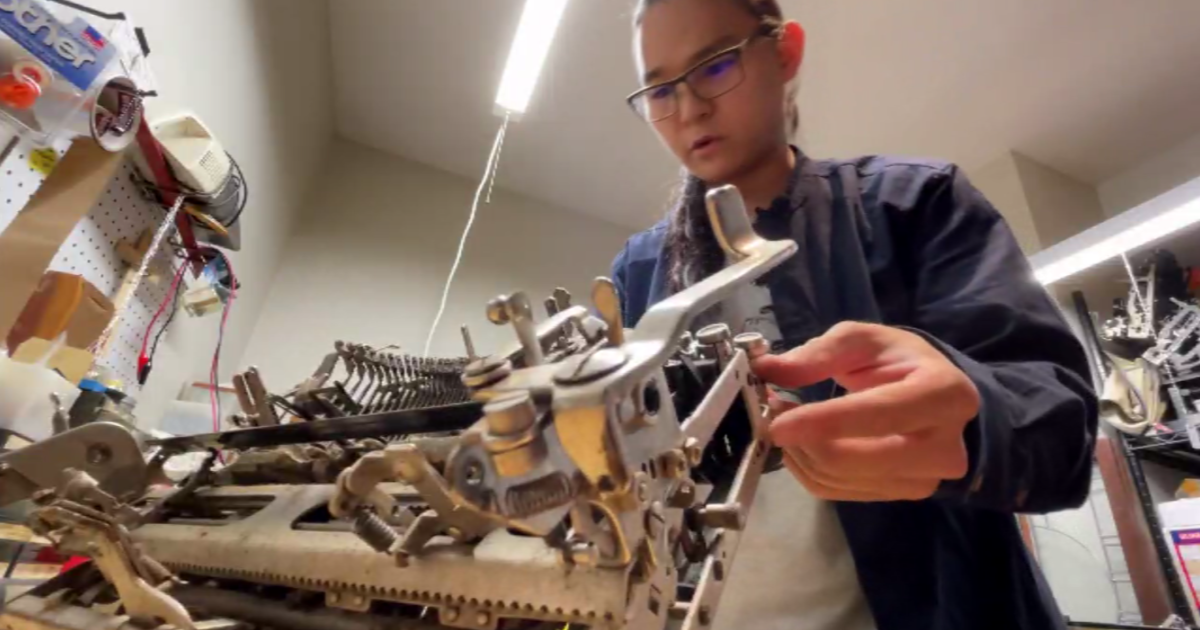Durkin: Know Your Opponent - Dallas Cowboys
By Dan Durkin-
(CBS) The Cowboys have been in this situation before. Win out, and they're in the playoffs. Yet, in back-to-back seasons, they've fallen at the finish line.
Will 2013 be different? Or, will it be yet another December to not remember?
Since Jerry Jones took ownership in 1989, the Cowboys have never gone four seasons without making the playoffs. No pressure, Jason Garrett. Jones claims that Garrett's job is secure for 2014, but that endorsement may need to be revisited should the Cowboys falter yet again. Prior to the season, Garrett was stripped of play-calling duties, which are now handled by offensive coordinator Bill Callahan.
The popular narrative is that quarterback Tony Romo's play goes south as the mercury drops, but save for a few moments, that's somewhat misleading.
In December games since 2011, Romo has averaged 300 passing yards, a 110 passer efficiency rating, completed 68% of his passes, with 22 touchdowns against five interceptions. However, over that same span, he's 1-4 against the NFC East.
One of Romo's failed moments came in last season's finale against the Redskins. To that point in the month of December, Romo was 3-1 with 10 touchdowns, one interception and a 115 passer efficiency rating. But, with a playoff berth on the line, Romo put up a clunker, throwing three interceptions, including a floater to the flats with three minutes remaining in a 3-point game that put the season on ice.
Despite being the ultimate team sport, quarterbacks largely get too much credit for wins and too much blame for losses. This is understandable to a point, given the volume of decisions they make that impact the outcome of the game, and the amount of money they earn relative to their teammates.
The Cowboys' evaluation of Romo went beyond his 1-3 playoff record and an 0-3 record in games where a playoff berth was on the line. This offseason, they made him a member of the exclusive nine-figure club, inking a 6-year, $108M with $40M in truly guaranteed money.
So far this season, Romo's play has matched his pay grade.
Through 12 games, Romo has only eight turnovers, the second best mark for quarterbacks who have started every game, trailing only Kansas City's Alex Smith. But unlike Smith, Romo isn't asked to manage games, he's relied upon to win them.
The contributions from their running game have been minimal, but part of that is by design. The Cowboys 249 rushing attempts are the second-lowest total in the league.
Running back DeMarco Murray isn't a shifty game-breaker who can make cuts in the hole, rather, he's a downhill runner who works best behind a lead blocker. This made the decision to cut fullback Lawrence Vickers in the offseason a curious choice.
With a true fullback on the roster, the Cowboys ran a lot of I-formation power out of '21' personnel (two running backs, 1 tight end), with designed holes for Murray to attack. This season, the Cowboys have been running from '11', '12', and occasionally '13' in single back sets, with gun runs mixed in.
Just yesterday, they signed former-Bear fullback Tyler Clutts to a one-year deal. While this move doesn't signal a shift in philosophy, it should bring more balance and two-back power down the stretch to an offense that passes nearly 65% of the time. The Cowboys are 5-0 in games where Murray has more than 100 yards rushing.
But the fact of the matter is, the Cowboys didn't give Romo $108M to hand the ball off.
Romo's decision-making wavers under pressure, but he's an improvisational playmaker. The Cowboys have merged Garrett's Air Coryell roots with Callahan's West Coast roots into an offense based on the threat of vertical passes with dangerous intermediate route runners like wide receiver Dez Bryant (115 targets, 68 receptions, 896 yards, 9 touchdowns) and Jason Witten (82 targets, 54 receptions, 622 yards, 6 touchdowns).
Physically, Bryant is as talented as any receiver in the league. He possesses a rare size-to-speed ratio, but is also still learning the nuances of becoming a complete receiver, specifically with assignments and route running. The challenges for the Cowboys are finding ways to keep coverage away from Bryant and getting him the ball while moving.
Recently, they've been deploying Bryant from the slot. This alignment makes it more difficult for teams to double team, typically matches him up against a slot corner, and gives him the ability to run the full route tree based on coverage. Only once this season has Bryant been targeted less than six times in a game and 70% of his receptions have gone for a first down.
Witten remains one of the league's most complete tight ends. While he's not the receiving threat that Jimmy Graham or Rob Gronkowski are, he's a premier in-line blocker and still commands a double team in certain formations. Rounding out the Cowboys receiving corps is vertical threat Terrance Williams, and reliable third down target Cole Beasley.
Defensively, things have not gone as planned for the Cowboys.
They're giving up a league-high 421 yards per game, 25 points per game, and have the sixth-least sacks in the league. Injuries have played a part, but more than anything, the Cowboys aren't getting enough contributions from key defenders.
So far this season, the Cowboys have given up an NFL-record four 400-yard passers, an NFL-record 40 first downs in a game against the Saints, two games of 600+ yards, and a 329-yard performance to Calvin Johnson. This defense gives up a lot of explosive pass plays, eight of the 22 passing touchdowns surrendered have gone for 20+ yards.
The Cowboys undertook a radical overhaul in philosophy, jettisoning defensive coordinator Rob Ryan's complex, high-pressure 3-4 man scheme for a pioneer of 4-3 zone defense, Monte Kiffin. Kiffin is best known for architecting a Cover-2 variant in Tampa Bay - appropriately dubbed the Tampa-2 - that buoyed a Super Bowl run in 2002.
The hire was a head-scratcher for a few reasons, Kiffin had been out of the NFL since 2008 and the Cowboys have recently made heavy investments in cornerbacks - Brandon Carr in free agency, and Morris Claiborne in the draft - adept at press man, which is antithetical to a true Tampa-2 scheme.
The Cowboys are applying Tampa-2 principles with their front, one-gapping with their four down linemen. But their coverages have been a mixture of Cover-1 (Man), Cover-2 (Zone), and a hybrid Cover-3 where their linebackers and safety play zone while the corners press.
During Sean Lee's absence, the Cowboys have been playing more dime coverage (six defensive backs), bringing safety Barry Church in as a hybrid safety-linebacker. Lee is set to return on Monday night from a hamstring injury, which will be a boost for a defense that desperately needs it.
DeMarcus Ware is one of the key defenders that hasn't performed to expectations. Ware is adjusting to playing with his hand on the ground, but is on pace for the lowest sack total of his career. One bright spot on the defensive line has been the play of three-technique Jason Hatcher. In a contract year, Hatcher has been one of the league's most disruptive interior lineman.
While it's tempting to look ahead to the season finale against the Eagles, the Cowboys can ill afford to do so. Yes, the Eagles are the only team on their remaining schedule with a winning record, but with the Bears clinging on to slim playoff hopes, Monday Night's matchup is a crucial game for both teams.
Follow Dan on Twitter: @djdurkin



